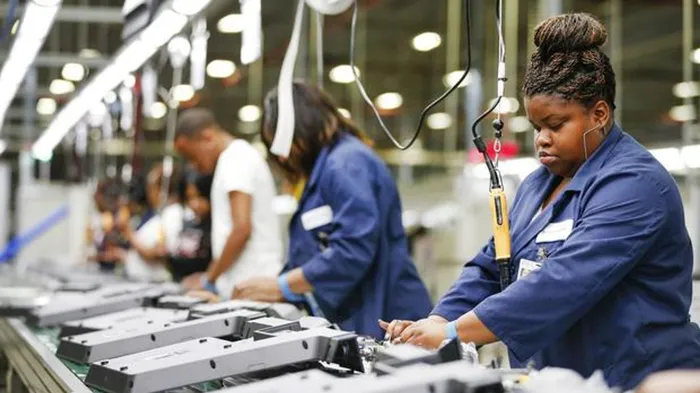How South Africa ranks in the Global Gender Gap report

UNEQUAL: Many women still earn less than men for the same work, says the writer. UNEQUAL: Many women still earn less than men for the same work, says the writer.
JOHANNESBURG - A decade of slow but steady progress on improving parity between the sexes came to a halt in 2017, with the global gender gap widening for the first time since the World Economic Forum’s Global Gender Gap Report was first published in 2006.
The Global Gender Gap Index ranks 144 countries on the gap between women and men on health, education, economic and political indicators. It aims to understand whether countries are distributing their resources and opportunities equitably between women and men, irrespective of their overall income levels.
Also read: Retrogressive SA in top 20 of Africa's gender equal lands
The report measures the size of the gender inequality gap in four areas:
Economic participation and opportunity – salaries, participation and leadership
Education – access to basic and higher levels of education
Political empowerment – representation in decision-making structures
Health and survival – life expectancy and sex ratio
The findings in this year’s report, published today, show that, overall, 68% of the global gender gap has been closed. This is a slight deterioration on 2016 and 2015, when the gap was 68.3% and 68.1%, respectively.
Behind the decline is a widening of the gender gap across all four of the report’s pillars: Educational Attainment, Health and Survival, Economic Opportunity and Political Empowerment. These latter two areas are of particular concern because they already carry the largest gaps and, until this year, were registering the fastest progress.
At the current rate of progress, the global gender gap will take 100 years to close, compared to 83 last year. The report estimates that the workplace gender gap will now not be closed for 217 years. But with various studies linking gender parity to better economic performance, a number of countries are bucking the dismal global trend: over one-half of all 144 countries measured this year have seen their score improve in the past 12 months.
“We are moving from the era of capitalism into the era of talentism. Competitiveness on a national and on a business level will be decided more than ever before by the innovative capacity of a country or a company. Those will succeed best, who understand to integrate women as an important force into their talent pool,” said Klaus Schwab, Founder and Executive Chairman, World Economic Forum.
At the top of the Global Gender Gap Index is Iceland. Having closed nearly 88% of its gap, it has been the world’s most gender-equal country for nine years. The gap between Iceland and the second-placed country, Norway, actually widens as both Norway and third-placed Finland saw their gaps widen this year. The top five is completed by Rwanda (4) and Sweden (5). The next two countries in the Index, Nicaragua (6) and Slovenia (7), also achieve symbolic milestones this year closing 80% of their gaps for the first time. Ireland (8), New Zealand (9) and Philippines (10) make up the top 10.
Among the G20 group of countries, France (11) is ranked highest on gender parity, followed by Germany (12), the United Kingdom (15), Canada (16), South Africa (19) and Argentina (34). The US drops four places to 49 while, at the lower end of the group, no fewer than six countries rank at or above 100. These are China (100), India (108), Japan (114), Republic of Korea (118), Turkey (131) and Saudi Arabia (138).
Sub-Saharan Africa displays a wider range of gender gap outcomes than any other region, with three countries; Rwanda (4), Namibia (13) and South Africa (19) in the global top 20, as well as many of the lowest-ranked countries in the Index, such as Mali (139) and Chad (141). Of the 30 countries from the region covered by the Index this year, 13 countries have increased their overall score compared to last year, while 17 have seen it decrease.
Progress across the health gender gap remains undefined. Formally the smallest gap, progress has oscillated with a general downward trend. Today, the gap is larger than it stood in 2006, in part due to specific issues in select countries, in particular China and India. Although it exhibits the most progress, the political gender gap is the widest and could take another 99 years to close. On the other hand, with current trends, the education gender gap could be closed within the next 13 years.
The World Economic Forum’s System Initiative on Shaping the Future of Education, Gender and Work is actively aiming to enable people to fulfil their full potential by developing and deploying their talent, thereby contributing to more prosperous economies and societies.
The System Initiative, led by a globally renowned Stewards group, offers knowledge tools such as the Global Gender Gap Report, the Global Human Capital Report, the Future of Jobs Report; dialogue series such as Creating the Care Economy and Reskilling the Adult Workforce and; public-private collaboration such as Closing the Skills Gap, Preparing for the Future of Work and Closing the Gender Gap.